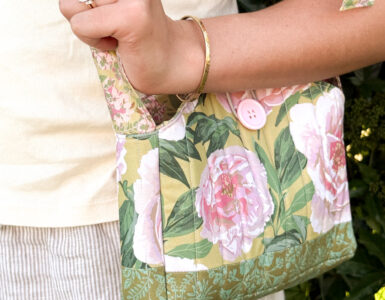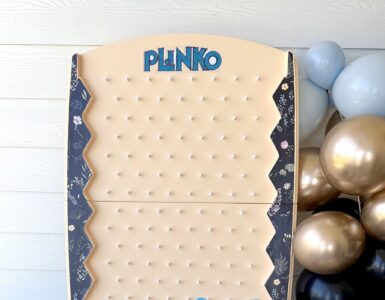We spotted the beautifully styled photos of local photographer and blogger, Lacey Jane Pappas. She shared her basic composition tips with Studio 5:
ABOUT COMPOSITION
When I didn’t have a “fancy” camera, I was able to use my point and shoot to work on composition. Here is a great way for you to work on composition too.
What is composition? Good composition grabs attention, makes an obvious statement, and pleases the eye.
Elements important to the composition include:
Shapes
Lines
Patterns
Contrast and Lighting
Framing
Space
Color
Examples:
Shapes: http://www.flickr.com/photos/pappaspics/2165383104/in/set-72157603431012313/
Lines: http://www.flickr.com/photos/pappaspics/3502689077/
Patterns: http://www.flickr.com/photos/pappaspics/3503499858/
Contrast and Lighting: http://www.flickr.com/photos/pappaspics/3502687973/
Framing: http://www.flickr.com/photos/pappaspics/3503499366/in/set-72157617622597241/
Space:
Space: http://www.flickr.com/photos/pappaspics/3502688659/in/set-72157617622597241/
Color: http://www.flickr.com/photos/pappaspics/3502688831/in/set-72157617622597241/
A great way to work on composition is if you see a composition you love in a magazine or on a blog, tear it out or print it out, and re-create it.
For example, take a look at this Real Simple cover here-http://www.flickr.com/photos/pappaspics/3533872669/ – Isn’t it lovely? Now, I’d like you to re-create it and take a picture of it.
Before starting, gather all like supplies… they don’t have to be exact, but something similar.
SUPPLIES:
Notepad
6 colored pencils
Mug
Flowers in vase
Now, mimic the photo by setting up the shot… Where should the notepad go? Where should the mug go?
Is your composition ready? Now take a picture of it and compare. How’d you do?
Whenever you see a magazine layout/cover, blog image that you like study the composition by recreating it.
LIGHTING
For me, lighting plays a crucial role in the photos I take of objects. Do yourself a favor- whenever you want to take a photo of an object, take it by a window, or in a room that has a lot of natural light. That way, the light will bounce off the object and create a really nice tone to the image.
Here are some examples of good light:
http://www.flickr.com/photos/pappaspics/3502689143/in/set-72157617622597241/
I took this in the morning after my husband’s 30th birthday party. There are two windows to the left.
Dad’s Polaroid:
http://www.flickr.com/photos/pappaspics/3207975932/in/set-72157609303333604/
There’s a little ledge in my bathroom that has fabulous light… Even if it’s in the bathroom, still go there and take advantage of the good light. I stuck this photo on the ledge and snapped away.
Buds in vases:
http://www.flickr.com/photos/pappaspics/3207127845/in/set-72157609303333604/
Another example from the ledge…
COLOR
Color is also an important element to the composition and to inanimate objects. Sometimes, inanimate objects are not the most glamorous thing to take photos of, so it’s important to add some color to spice up the image. For example, when I took pictures of the garland I had made, I also threw in some balloons to add more color to the shot.
Same with this set-
http://www.flickr.com/photos/pappaspics/3503499208/in/set-72157617622597241/
It would’ve been okay to leave this shot as-is, but by adding a green placemat to the shot; I was able to add more color to make the yellow egg really pop.
TAKING PHOTOS OF FOOD
I love to bake, so any chance I get, I’ll take photos of whatever I’ve created. To liven up the photos of regular food, I’ve added color and switched-up the composition.
For example, here’s a photo of some Pumpkin Spice cookies:
http://www.flickr.com/photos/pappaspics/3055331324/in/set-72157605527866104/
Rather than just place them on the white plate and be done, I added some color to the shot by stacking the plate on top of my some colorful books. And, if you look closely, you can see that the light is hitting the cookies from the right- that’s because I snapped right by a window.
It’s also great to create lines and patterns in a shot. I easily did this by taking photos of cookies I had laid on a tray:
http://www.flickr.com/photos/pappaspics/3327870802/
And, I, of course shot by a window.
Sometimes, food looks even better the simpler the shot.
Here are some examples:
http://www.flickr.com/photos/pappaspics/3503500228/in/set-72157617622597241/
http://www.flickr.com/photos/pappaspics/3502689393/in/set-72157617622597241/
TAKING PHOTOS OF PROJECTS
If you’ve completed a project you’re proud of and committed a lot of time to- why not take a picture of it?
Here are some ideas on how to capture some of the best projects…
Show the project in action… for example, with garland, show the piece once it’s been hung.
Example 1-
http://www.flickr.com/photos/pappaspics/2917041071/in/set-72157607781073359/
Example 2-
http://www.flickr.com/photos/pappaspics/3223953634/
The best way to get better at composition is to practice, practice, practice… so, if you find a lovely inanimate object you’ve found, created, or am inspired by, snap away!
Lacey Jane Pappas is a photographer and pianist. To learn more about Lacey’s photography, visit www.laceyjanephotography.com, or visit her blog at www.ljphappyblissful.blogspot.com.















Add comment